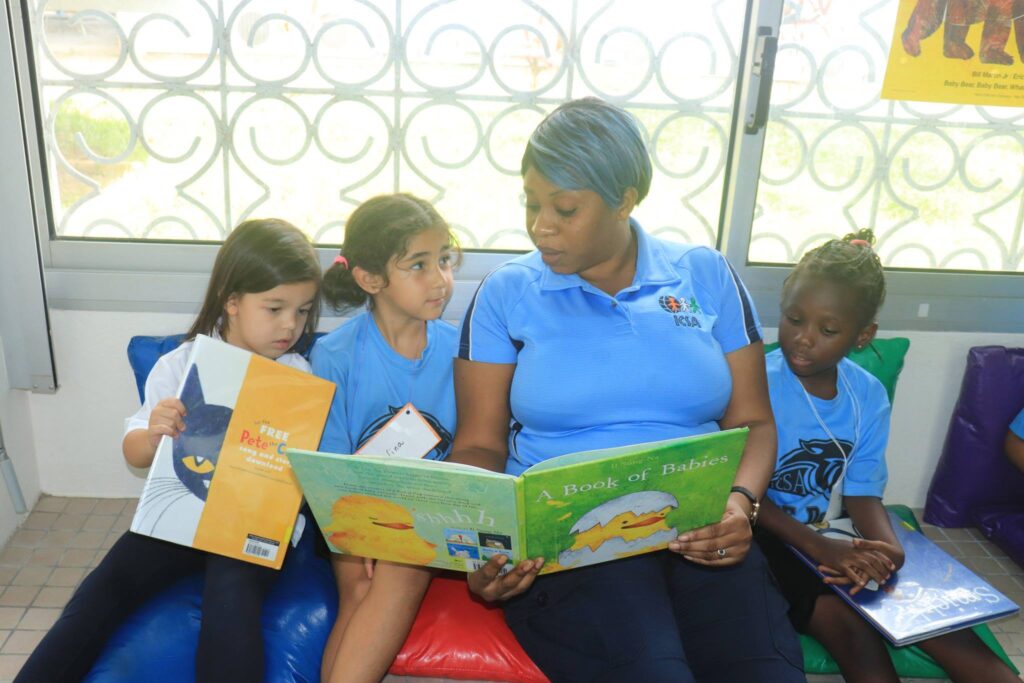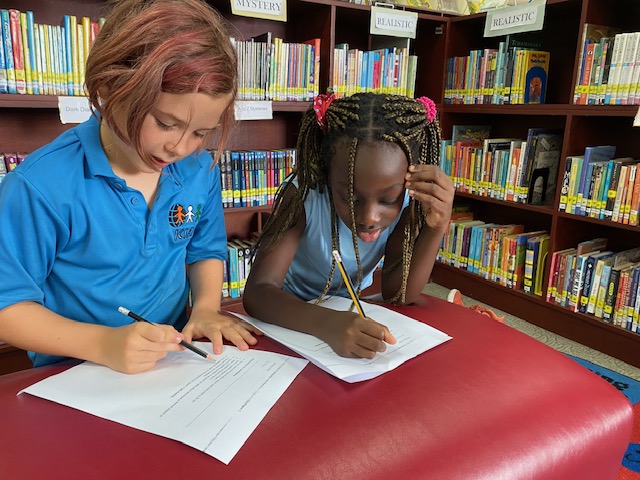English Language Learning
The students and families at ICSA come from a wide variety of backgrounds and nationalities. In fact, many of the children enrolled in the school come from families where English is used as a second or foreign language or where it is not spoken at all. In order to meet the needs of these children, who must rapidly learn to function in an environment where English is the language of communication, a program has been designed to provide extra language support. In this program, English Language Learner (ELL) teachers collaborate with subject teachers to facilitate language acquisition.
Forms of ELL Services

Children enrolled at ICSA are assigned to regular classes according to their age and previous school experience. Additionally, we provide:
Pull out ELL Services: Students whose English language proficiency is at Entering or Beginning levels receive English language lessons out of their regular classroom based on specific student needs.
Push-in ELL Services: For the remainder of the school day, students follow the same instructional program as their peers. However, both the ELL and classroom teachers are responsible for differentiation and scaffolding. During push-in sessions, the classroom teacher and the ELL teacher work together for co-planning, co-teaching, and co-assessing students.
With these services, the children benefit from language instruction that meets their specific needs while at the same time, they obtain maximum exposure to English in the content areas within their mainstream classrooms.
Assessment Process

Step 1: Review of Linguistic History Survey and Student Records
The first step in ELL identification is to review each student’s Linguistic History Survey and previous school records submitted by families during the admissions process. All applicants to ICSA are required to fill out this survey so we have a better understanding of the child’s language background.
Step 2: Assessment for Placement
Based on this Linguistic History Survey and student records, the ELL teacher will decide if the applicant requires the WIDA (World-Class Instructional Design Assessment) test to determine English proficiency levels. The test measures English Language proficiency in reading, writing, listening, and speaking.
Step 3: ELL Questionnaire
If the child is admitted, the family and/or the student then completes the ICSA ELL Questionnaire. Once completed, this document, along with the child’s WIDA results and Linguistic History Survey will be given to the classroom teacher. This process ensures that both the ELL teacher and the classroom teacher have a clear linguistic understanding of their new student.
ELL Assessment

At the end of each academic year, all current ELL students will take the WIDA Summative Test to assess English proficiency growth. This data can also be used to determine if the student can exit the ELL program.
Formative Assessment: After students are enrolled into the ELL program, the classroom and ELL teachers use ongoing formative assessment to determine the student’s progress and to assist in determining the best method of instruction for each student. Teachers’ observations, anecdotal records, and student samples are gathered in each student’s ELL folder. This shows the student’s growth in listening, speaking, reading, and writing.
Summative Assessment: During each ELL pull-out lesson, teachers monitor and evaluate students. Tests, rubrics, and other projects are used to assess students’ progress.
Grading: ELL students follow the ICSA grading scale for Lower and Upper School. In addition, ELL teachers write progress reports at the end of each quarter to document student progress. The reports are based on teacher observations, summative, and formative assessments. The reports should include reference to the students’ growth in listening, speaking, reading, and writing.
